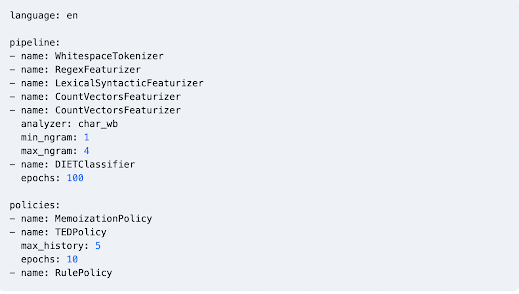Featured
- Get link
- X
- Other Apps
Understanding How RASA chatbot works
What is RASA and How it works? What is NLU in RASA? Why do we use RASA? Is RASA a NLP? What is RASA for? Is RASA a chatbot? These are some of the questions which come in our mind when we think of RASA. Let's try to know about them...
In this era of automation, people are moving towards the development of chatbots to a greater extent. Even small businesses are adding chatbot plugins to their websites to perform quick actions. RASA is an open source framework which help us achieve this.
RASA have two main models in it:
- NLU
- Core
Intent: An intent is a group of utterances with similar meaning. Meaning is the important word here. Consider these two sentences: “I want to make a reservation in an Italian restaurant” and “I need a table in a pizzeria”.
Entity: Entities are structured pieces of information inside a user message
Output: Output of this model is the intent name and the entity.
Core:
Core model tries to predict the next action which is required to be executed in the flow. After the core model predicts the next action it is performed using either printing the template text from domain.yml file or executing the run method from the actions.py file. stories.md and rules.md file behaves as a training data file for this model.
Responses: Responses are messages that your assistant sends to the user. A response is usually only text, but can also include content like images and buttons.
Output: output of this model is predicted next action.
It should be noted that NLU model and Core model uses some configurations which can be defined in the config.yml file as pipelines and policies. Following is an example of a config file:
Here the Pipeline takes care of the NLU part i.e. Identification of the intent and entities. Policies takes care of the core part i.e. selection of the next action.In later blogs we will dig deeper into RASA. Till then Happy Learning !!!
- Get link
- X
- Other Apps
Popular Posts
How can you create your RASA custom Actions as Asynchronous
- Get link
- X
- Other Apps



Comments
Post a Comment